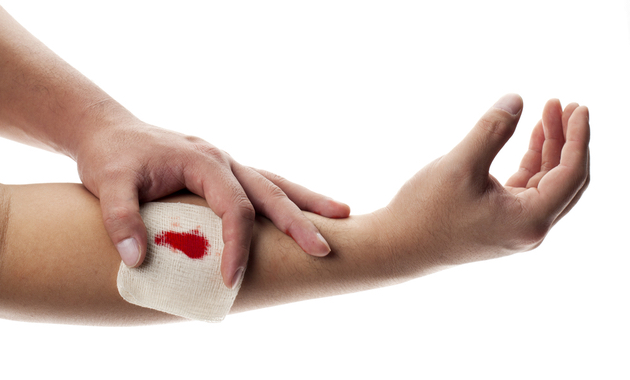
Chopping vegetables in a jiffy and suddenly got a cut.
Riding a cycle and fell from it only to escape with bruises and bleeding.
Getting late to office so tried shaving quickly and got nicked.
Aren’t these scenarios a part of our day-to-day routine? Most of us might have been a spectator or a victim of cuts and wounds. There are few first-aid measures which can help to stop bleeding and lower your risk of infection. So if you experience a cut or bruise or spot anyone with the same condition, here is what you need to do.
First-Aid For Cuts And Bruises
Remember that not every cut might require you to rush to a hospital. In case of minor cuts you can try to stop bleeding at home, however, if there are major or deep cuts, then getting medical help is mandatory.
Always Provide Initial Assistance Of Injury Or Illness With These Must Have First Aid Supplies
First-aid For Cuts (Minor) and Bleeding
Here is a step by step guide to take care of cuts/scrapes/bleeding
– In most cases, bleeding due to minor cuts and scrapes usually stop on its own. However, if the bleeding fails to stop, then gently apply pressure on the wound to stop bleeding. Use a clean cloth/hand or bandage to apply the pressure. You can even elevate the area if the wound is in the leg or hand which can also help to reduce bleeding.
– Wash the area with clean water and mild soap as it can lower the risk of infection. Do this till you feel the bleeding has stopped. Once you wash the area, make sure you dry the area properly with a clean, dry cloth. This is because, an excess of moisture around the cut or wound can lead to pus formation, which in turn can impair the healing process.
– Remove dirt and debris, if any, around the wound. Avoid using hydrogen peroxide or iodine as it might irritate the skin. Use tweezers or forceps (a clean one, preferably with an antiseptic solution) to remove dirt or any visible particles around the wound. Do not try to remove wounded skin as it might further lead to bleeding and increase the risk of infection. Do consult a doctor if you find it difficult to clean the wound.
– Apply antibiotic or antiseptic ointment to the wound/cut as it can not only lower the risk of infection but also keep the surface a bit moist, which in turn can prevent scarring. Use of antiseptic cream on the wound can help to relieve irritation and burning sensation. Apply just a thin layer and not laden the cut with ointment. Also, if you experience any rash or redness around the cut or feel itching after the application of the ointment, then stop using it. It could be a sign of an allergic reaction.
– Use a clean bandage or wire gauze to cover the wound. You can even tie a neat cotton cloth around the cut or wound. Covering the wound can not only keep the wound clean but also prevent the entry of air or moisture which can delay the process of healing. Moreover, it can also lower the risk of infections as an open wound/cut acts as a breeding ground for microbes. If you have a deep cut, then you might need to change the dressing quite often than not. If the bandage becomes wet or dirty, then it a sign to change the bandage.
– Get a tetanus shot if you haven’t got one in the last five years. This is because, cuts due to a rusty blade or knife can increase the risk of tetanus, which is a serious bacterial infection that can cause painful muscle spasms. So if you have a deep cut or cut due to a rusty instrument, then getting a tetanus injection can help you to lower the risk and protect you from tetanus.
**Consult India’s best doctors here**
(The article is reviewed by Dr. Lalit Kanodia, General Physician)
Recommended Reads:
First Aid: Tips To Follow For Nose Bleed
First Aid For Choking: What To Do When Choking?
References:
Proper wound care: How to minimize a scar. American Academy of Dermatology.